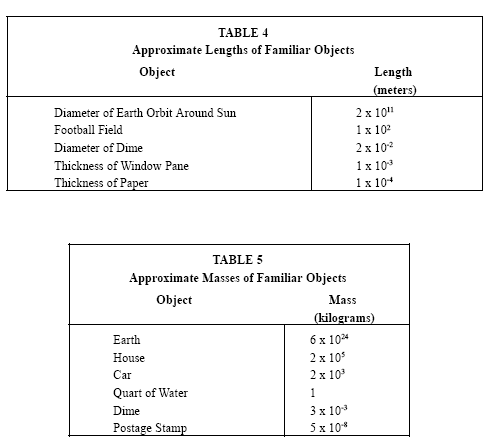Today we just had an important lecture about the measures of central tendency. Our lecturer thought us how to actually understand fully the concepts of mean, median, and mode. The best about this lecture is that we are being thought of why there is such things. Why do we use them? why do we have these concepts. Not the normal lecture where we would just know the meaning and formulas we need to acquire.
The session was awesome in someway and we also enjoyed it because Lab 3 students were mixed with us.
Looking forward to more physics stuff!
December 12, 2011
December 11, 2011
Activity 3: Calipers
"And as it measured in her calipers,
The mountain stood exalted in its place.
So love will take between the hands a face. . . ." -
Robert Frost
In every measurement, there is human judgement. To lessen
the effect of human judgement in measurement, we use calipers.
In this session, we measured minimum amounts through the use of some (awesome) instruments. The simplest instrument was an ordinary ruler, the second one is what we call a micrometer caliper, and last but the coolest of all was the vernier caliper.
My group was given a solid sample for us to measure the dimensions needed to answer the questions listed in our activity sheet. The measuring process was tough for it requires many formulas and patient measuring techniques.
After measuring the dimension of the solid sample and recording all the data needed to answer the questions in the activity, we were given grain samples. These grain samples were measured in length.
Seeing my group mate actually measuring the grain was funny in the same time pitiful (LOL). Imagine a tiny little grain, and we need to measure it's length :))
The whole session was fun. Our attention was bounded to the activity only. We were able to accomplish our objectives for the session : to report as best estimates quantities that are not fluctuating; describe how the experimenter's judgement can introduce uncertainty in measurement ; and read length measurements using the vernier and micrometer calipers.
Physics 101.1 is getting tougher and tougher!
Activity 2: Error and Error Propagation
“An error does not become truth
by reason of multiplied propagation, nor does truth become error because nobody
sees it.” - Mahatma Gandhi
Errors are common in life.
We learn our mistakes through errors we do or experience everyday.
In the field of science, errors are defined as the closeness of values
denoting how far a measured value is with respect to a reference value.
In this session, I was able to
understand full the concept of uncertainty, the error between measured values.
Also all about deviations, relative and absolute error. There are
so many formulas to understand and I should grasp it well.
By the end of the session, I was
able to cling on the knowledge I should have to meet our objectives of the day.
With my group, we were able to identify the type of error involved in an
experiment; Distinguish between accuracy and precision of a measuring device;
and report values that result from operations on best estimates.
The whole session was fun. The real fun part was the group errors we committed while answering the activity :))
I'm looking forward
to acquiring more knowledge through the world of physics :)
December 06, 2011
Activity 1 : On Measurement
"The process of measurement is important in any scientific endeavor, Scientific theories no matter how elegant mathematically may be considered weak without experimental verification and may even be rejected when experimentally invalidated."
True to what our module indicated, measurements are really important when it comes to the scientific world. When we are talking about measurements, the sure thing to come to our mind is how sure are we that our measurements are exact.
The frequently asked questions during my high school years were:
1. How precise is your measurement?
2. How accurate is your measurement?
3. Are you sure that you did not actually commit any errors during the process of measurement?
These questions are answered at the most precise, accurate and valid way of measuring known today ( LOL )
The concept of UNCERTAINTY what we have discovered for today. Measurement is inherently uncertain; there is no absolute or exact reading. Based on the discussion. uncertainty depends on: (1) the quality of the device, (2) quantity being measured, and (3) personal errors.
The first concept that we studied was about SIGNIFICANT FIGURES. The need to determine which digits are significant arise form the uncertain nature of measurement. After knowing the concept of significant figures, we go on to the LEVELS OF HANDLING UNCERTAINTY.
In the levels of handling uncertainty, we have studied four levels. The first level is the ZEROTH ORDER OF APPROXIMATION : Order of Magnitude. The order of magnitude is the exponent of the base 10 in a number reported in scientific notation. The second level is the First Order Approximation: Significant figures. The zeroth order of approximation is a very rough estimate, and may not work for experiments that need higher level of precision, so we need the First Order Approximation in which there are many rules to follow when handling uncertain values (YES there are many rules). The third level is the Second Order of Approximation: Best Estimates. This is the part where my group messed up with the values while answering the activity worksheet (haha). Best estimates are used for quantities that are fluctuating or irregular. Lastly, the last level would be the Third Order of Approximation: Statistical Treatment. In this level of approximation, we require that the number of measurements conducted is sufficiently large that is approaches infinity.
The 1st activity worksheet was really fun answering. My group had a good time especially when we really messed up with some values included in the worksheet. Looking forward for more Physics 101.1!
SAMPLE OF WHERE TO USE MEASUREMENTS
Subscribe to:
Posts (Atom)



